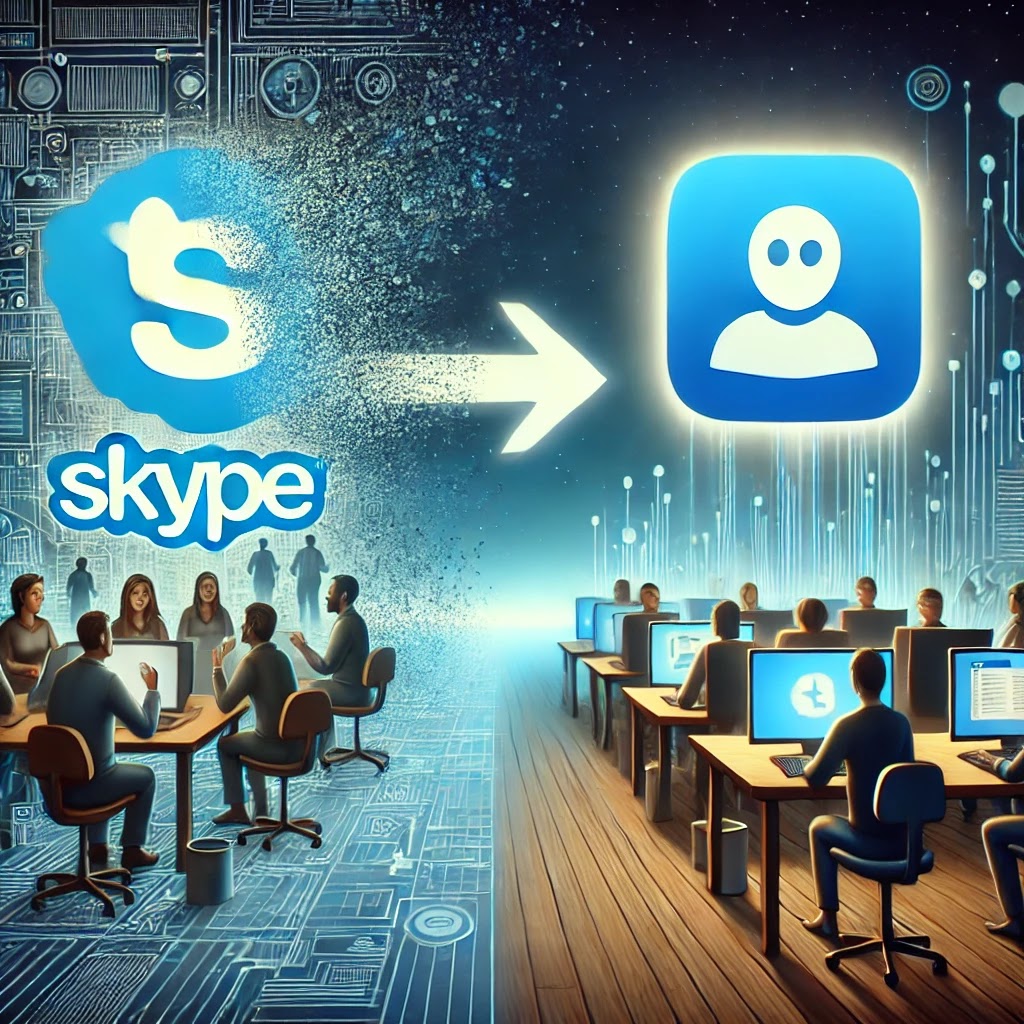In a move that signals the end of an era, Microsoft has announced its decision to shut down Skype, one of the most popular communication platforms of the early 2000s. The company is shifting its focus to Microsoft Teams, which has become the preferred choice for businesses and enterprises. This transition marks a significant change in the landscape of digital communication. But why is Microsoft shutting down Skype? What does this mean for users, and what are the best alternatives?
In this blog post, we’ll explore:
- The history and rise of Skype
- Reasons behind Microsoft’s decision to phase out Skype
- The impact of Skype’s shutdown on users and businesses
- Alternative platforms for video calling and messaging
- How to transition from Skype to Microsoft Teams
The Rise of Skype: A Digital Communication Pioneer
Skype was founded in 2003 by Niklas Zennström and Janus Friis and quickly became a game-changer in online communication. It allowed users to make free voice and video calls over the internet, attracting millions of users worldwide.
Microsoft acquired Skype in 2011 for $8.5 billion, integrating it into its suite of products. At its peak, Skype was the go-to platform for video calls, especially before the rise of mobile apps and cloud-based collaboration tools. It played a crucial role in connecting businesses, families, and remote teams.
However, with the emergence of competitors like Zoom, Google Meet, and WhatsApp, Skype’s dominance started to decline.
Why Is Microsoft Shutting Down Skype?
Microsoft’s decision to shut down Skype isn’t entirely surprising. Several factors contributed to this move:
1. The Shift to Microsoft Teams
Microsoft has been heavily investing in Teams, a collaboration tool designed for businesses and enterprises. Since its launch in 2017, Teams has evolved into a powerful communication platform that integrates with Office 365, offering chat, video conferencing, file sharing, and collaboration tools—all in one place.
With over 280 million active users (as of 2024), Teams has surpassed Skype in popularity, making Skype redundant in Microsoft’s ecosystem.
2. Declining User Base
Skype’s user base has significantly declined over the years. In contrast, platforms like Zoom and Google Meet have gained massive traction, especially after the COVID-19 pandemic, as they provided more reliable and user-friendly video conferencing solutions.
3. Outdated Technology
Skype’s infrastructure, designed two decades ago, has struggled to keep up with modern demands. Microsoft Teams, on the other hand, is built on cloud technology, providing better scalability, security, and integration with business tools.
4. Poor Mobile Experience
Unlike WhatsApp, FaceTime, and Google Duo, Skype never fully adapted to the mobile-first era. Users found Skype’s interface clunky and inconvenient compared to other apps.
5. Integration with Microsoft’s Ecosystem
By shutting down Skype, Microsoft can streamline its communication services and focus on a single platform—Teams—which integrates seamlessly with Microsoft 365, OneDrive, and Outlook.
What Does Skype’s Shutdown Mean for Users?
If you are a long-time Skype user, here’s what you need to know:
- Skype will gradually phase out, but Microsoft will provide transition support.
- Users will be encouraged to switch to Microsoft Teams, which offers more features and better security.
- Some features will be discontinued, while others will be merged into Teams.
Microsoft has assured that existing Skype accounts can be migrated to Teams with minimal disruption.
Alternatives to Skype: Best Communication Platforms
If you are looking for alternatives to Skype, here are some of the best options available:
1. Microsoft Teams (Best for Businesses and Professionals)
- Free and paid versions available
- Integrated with Microsoft 365
- Advanced team collaboration features
2. Zoom (Best for Video Conferencing)
- High-quality video and audio
- Breakout rooms and webinar features
- Popular for remote work and virtual events
3. Google Meet (Best for Google Users)
- Seamless integration with Gmail and Google Calendar
- Simple and user-friendly interface
- Free for personal use
4. WhatsApp & FaceTime (Best for Mobile Users)
- Free voice and video calls
- End-to-end encryption for security
- Best for personal communication
5. Discord (Best for Gaming and Communities)
- Voice channels and screen sharing
- Popular among gamers and online communities
- Free and premium versions available
How to Transition from Skype to Microsoft Teams
If you’re a Skype user, here’s how you can make the transition smooth:
- Download and Set Up Teams – You can install Microsoft Teams on your desktop or mobile device.
- Sign In with Your Microsoft Account – If you have a Skype account, you can log in using the same credentials.
- Migrate Your Contacts and Chats – Microsoft provides tools to import your Skype contacts into Teams.
- Learn Teams Features – Explore features like team chat, video calls, file sharing, and collaboration tools.
- Inform Your Contacts – Let your contacts know that you are moving to Teams or another platform.
Microsoft offers support and guides to help users transition smoothly.
Final Thoughts
The shutdown of Skype marks the end of an era, but it also signifies the evolution of digital communication. Microsoft is shifting its focus to Teams, which offers more advanced collaboration tools for businesses and individuals.
While Skype will always be remembered as one of the pioneers of online communication, users now have better options like Microsoft Teams, Zoom, and Google Meet to stay connected.
If you’re still using Skype, it’s time to explore alternatives and make the transition to a more modern and efficient communication platform.
FAQs on Skype’s Shutdown
1. When is Microsoft shutting down Skype?
Microsoft has not announced an exact shutdown date, but Skype is being gradually phased out in favor of Teams.
2. Will my Skype account work on Teams?
Yes, Microsoft allows you to sign in to Teams using your Skype credentials.
3. What happens to my Skype messages and contacts?
Your messages and contacts can be migrated to Teams. Microsoft provides an easy transition process.
4. Can I still use Skype after the shutdown?
Microsoft may continue to support Skype for some time, but updates and new features will no longer be prioritized.
5. What’s the best alternative to Skype?
For businesses, Microsoft Teams is the best option. For personal use, Zoom, WhatsApp, or Google Meet are great alternatives.
Would you like help setting up Microsoft Teams or finding the best alternative for your needs? Let us know in the comments!


